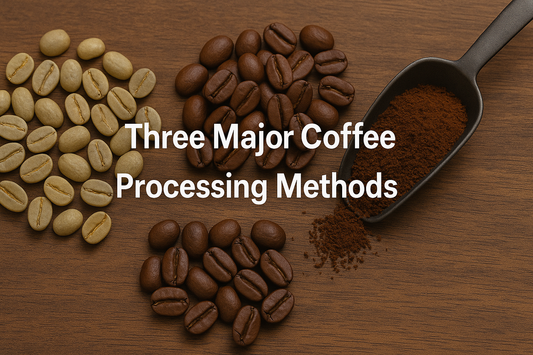Coffee Origins
All Posts in Coffee Origins
- Pink Bourbon Coffee
- Green Coffee Beans
- Hawaii Coffee Beans
- Rwanda Coffee Beans
- El Salvador Coffee Beans
- Nicaragua Coffee Beans
- Guatemala Coffee Beans
- Mexican Coffee Beans
- Honduran Coffee Beans
- Ethiopian Coffee Beans
- Peruvian Coffee Beans
- Panama Coffee Beans
- Brazilian Coffee Beans
- Colombian Coffee Beans
- Indonesian Coffee Beans
- Kenyan Coffee Beans
- The Smallest Coffee Bean: Micro Mocca
- The Largest Coffee Bean: Maragogype (Elephant Bean)
- Naturally Low-Caffeine Coffee
- Coffee Cherry: What’s Inside?
- Fruit Fermentation Processing Method in Coffee
- Anaerobic Fermentation Processing Method in Coffee
- Coffee Cultivation and Growth Stages
- Decaffeinated Coffee
- What Is Caffeine?
- Coffee Bean Grading Systems (Part 2)
- Coffee Bean Grading Systems (Part 1)
- Three Major Coffee Processing Methods
- What Components Make Coffee Taste Great? Unveiling the Secrets of Green Coffee Beans

What Is Caffeine?
Caffeine (English: caffeine) is a xanthine alkaloid commonly found in the seeds and leaves of various plants, most notably in the coffee plant, tea plant, yerba mate (from the Paraguayan...
What Is Caffeine?
Caffeine (English: caffeine) is a xanthine alkaloid commonly found in the seeds and leaves of various plants, most notably in the coffee plant, tea plant, yerba mate (from the Paraguayan...

Coffee Bean Grading Systems (Part 2)
Common African Coffee Bean Grading Systems African countries generally do not share a uniform grading system. In Ethiopia, for example, many indigenous wild coffee varieties produce smaller beans, making size-based...
Coffee Bean Grading Systems (Part 2)
Common African Coffee Bean Grading Systems African countries generally do not share a uniform grading system. In Ethiopia, for example, many indigenous wild coffee varieties produce smaller beans, making size-based...

Coffee Bean Grading Systems (Part 1)
Why Grade Green Coffee Beans? Grading coffee beans serves multiple purposes. It provides farmers with a clear benchmark for quality, and it gives buyers a general idea of what to...
Coffee Bean Grading Systems (Part 1)
Why Grade Green Coffee Beans? Grading coffee beans serves multiple purposes. It provides farmers with a clear benchmark for quality, and it gives buyers a general idea of what to...

Three Major Coffee Processing Methods
1. Natural (Sun-Dried) Process Overview:The oldest and most traditional method, in which freshly harvested coffee cherries are sun-dried for about two to four weeks. The natural drying process causes the...
Three Major Coffee Processing Methods
1. Natural (Sun-Dried) Process Overview:The oldest and most traditional method, in which freshly harvested coffee cherries are sun-dried for about two to four weeks. The natural drying process causes the...

What Components Make Coffee Taste Great? Unveil...
Coffee trees bear cherry-sized fruits, and the seeds inside these fruits are what we call coffee beans. Typically, each fruit encases two flattened seeds that face each other. Once immersed...
What Components Make Coffee Taste Great? Unveil...
Coffee trees bear cherry-sized fruits, and the seeds inside these fruits are what we call coffee beans. Typically, each fruit encases two flattened seeds that face each other. Once immersed...
